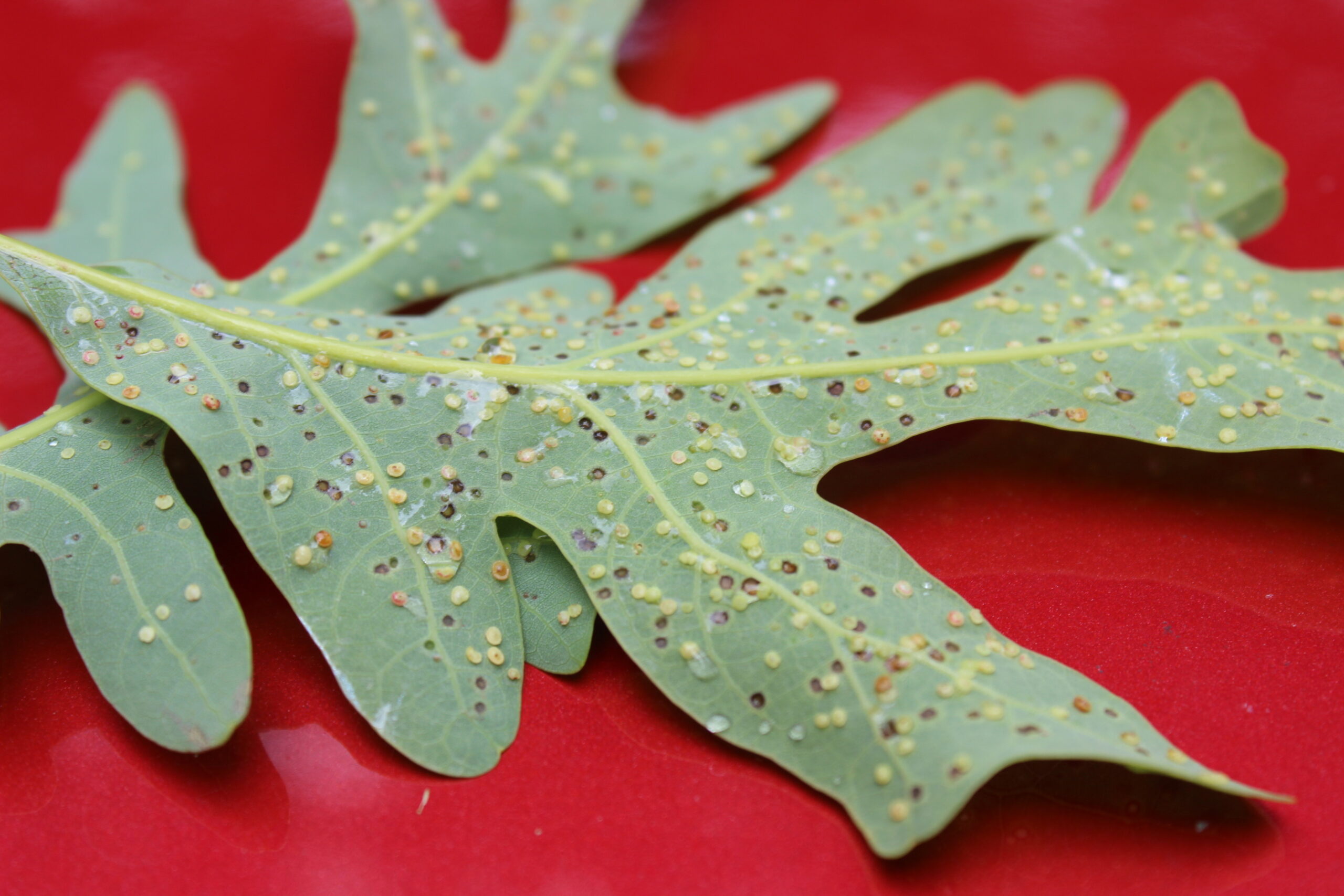Due to an unseasonably warm dormant season, many insect species overwintered extremely well. Once such insect is the gall wasp (Neuroterus umbilicatus). This tiny little wasp lays its eggs in the leaves of oak trees, resulting in the formation of “button oak gall”. Don’t worry, these wasps do not sting!
What is a gall exactly? A gall is an abnormal growth or swelling that occurs on plants, typically in response to the presence of various organisms such as insects, mites, fungi, bacteria, or nematodes. This particular gall is caused by the wasp as it lays its egg within the leaf. The wasp’s favorite host is White Oak (and other species in that family). Button oak gall appears as small, hard, seed-like structures that can be found on the underside of leaves. The galls have also been compared to looking like quinoa for all you super food fans.
Button oak gall is also formerly known as “jumping oak gall. The term “jumping” comes from the behavior of the galls when they fall to the ground. The larvae inside move, causing the gall to “jump”, which helps the larvae reach a suitable location to pupate.
Button oak gall is a yearly Springtime phenomenon that typically goes unnoticed except by trained eyes. Normally, the damage caused by the galls is minimal and does not significantly affect tree health. This year, however, we are seeing a lot more concerning symptoms from heavy infestations.
Symptoms include:
- Early leaf drop, especially in the lower canopy
- Browning/yellowing leaves- often accompanied by leaf curling. Commonly mistaken as a fungal issue.
- Major defoliation
While the galls themselves may cause some harm, they typically do not directly lead to the death of a tree. However, our primary concern is the attraction of secondary pests like ambrosia beetles…
Ambrosia beetles are tiny insects themselves that are attracted to pheromones released by stressed trees. Once ambrosia beetles get into a tree, a whole tree can die- seemingly “overnight”.
Prized trees with heavy button oak gall could be considered for preventative borer treatments, fertilization, and possible growth regulation to help alleviate stress and enhance defenses against secondary pests.
